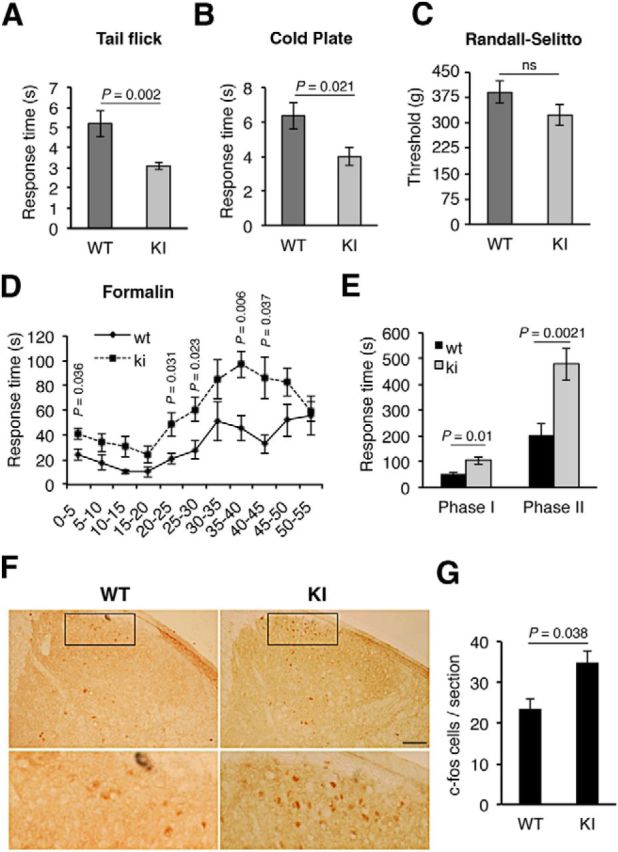Figure 6.

Enhanced sensitivity to thermal and inflammatory pain in TrkAP782S mice. A, TrkAP782S mice are more sensitive to thermal pain as compared with WT mice, assessed by tail-flick test (n = 11 for WT and n = 15 for KI). B, TrkAP782S mice are more sensitive to cold pain compared with WT mice (n = 9 for WT; n = 5 for KI). C, TrkAP782S mice display a similar noxious mechanical pain to WT mice assessed with the Randall–Selitto assay (n = 20 for WT and KI). D, TrkAP782S mice are more sensitive to inflammatory pain induced by formalin injections. Licking and biting times upon formalin injection in the right hindpaw were recorded and quantified in cumulative periods of 5 min (n = 7 for WT; n = 13 for KI). E, Cumulative licking and biting times in Phases I (acute, 0–15 min) and II (inflammatory, 20–55 min). The mean observed response time in Phase I was 51.0 ± 7.65 s and 105.38 ± 14.58 s for the WT and KI mice, whereas the mean observed response time in Phase II was 205.89 ± 43.03 s and 478.77 ± 63.04 s. F, c-fos staining in the spinal cord from WT and KI mice 3 h after formalin injection. TrkAP782S mice showed an increased c-fos staining in lamina I and II after formalin injection compared with WT mice. Note the increased number of c-fos-positive neurons in the section from a KI mouse. Scale bar, 200 μm. G, Quantification of c-fos-positive neurons. c-fos staining in the spinal cord from WT and KI mice after formalin injection (n = 3). Results for all panels are presented as means ± SEM; p values for A–C, G were calculated using a two-tailed Student's t test, and for D, E using the Mann–Whitney test, two-tailed. ns, Nonsignificant. Note the increased sensitivity of KI mice to thermal- and inflammatory-mediated pain.
